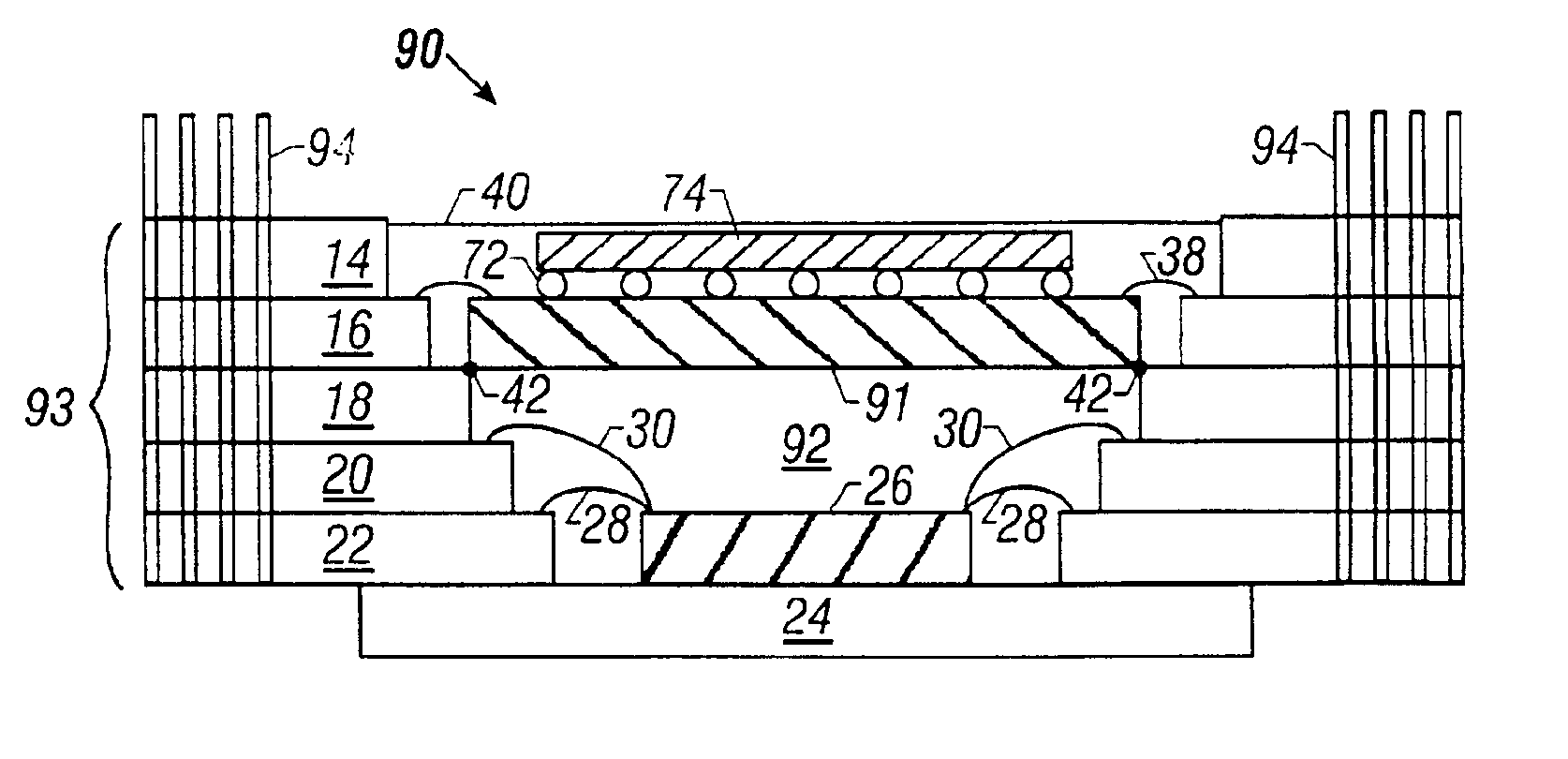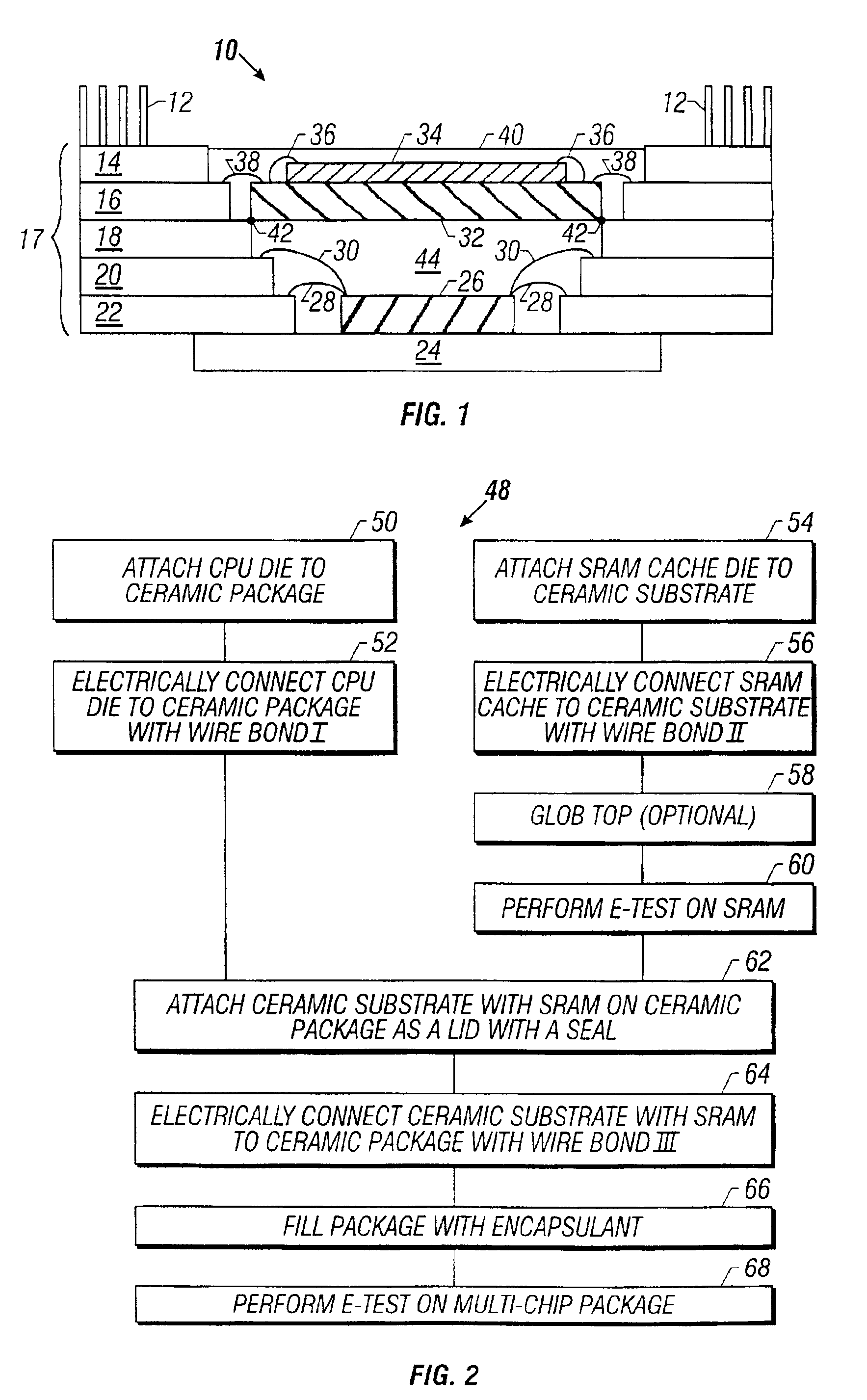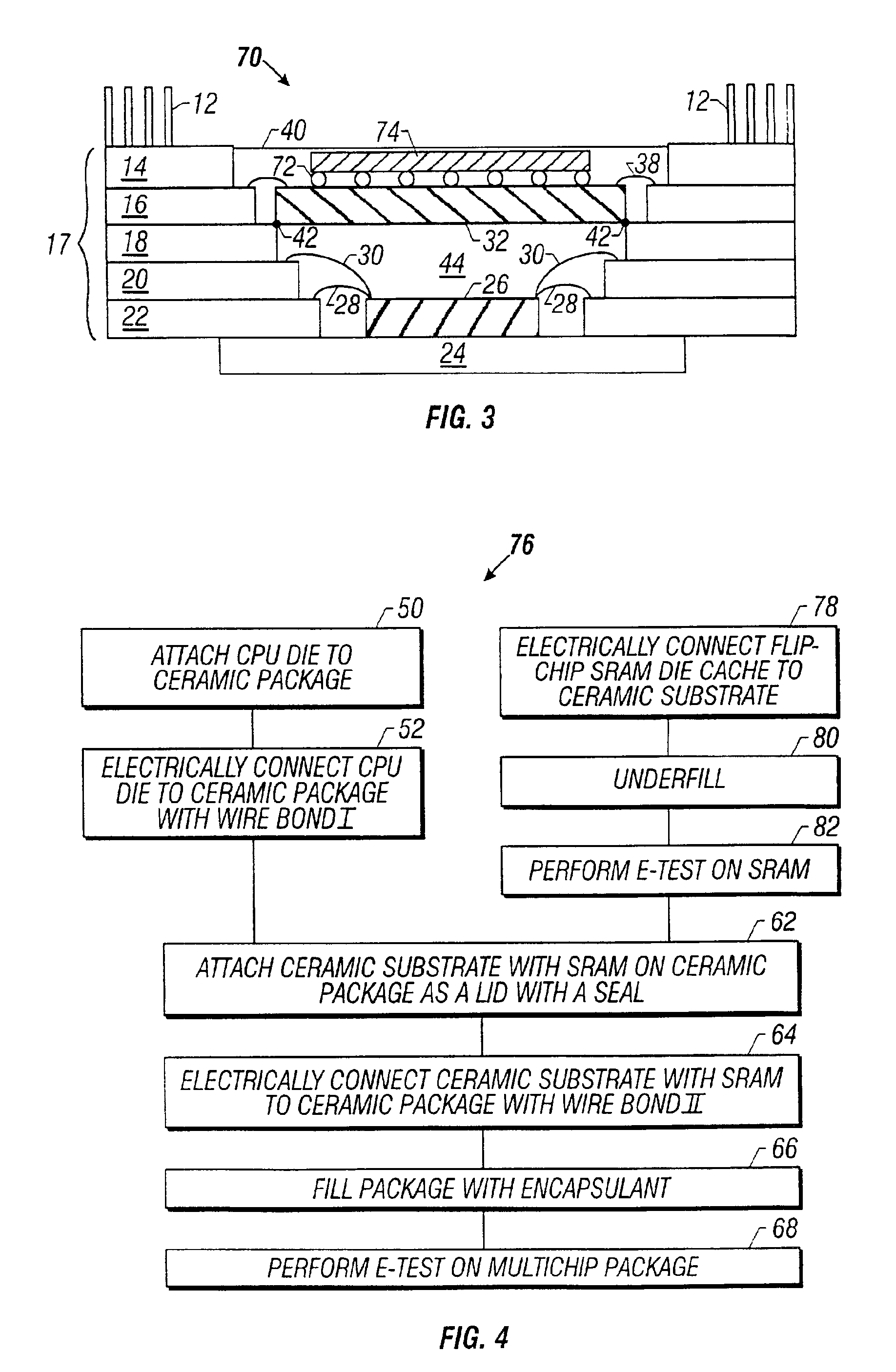Stacked chip packaging
a technology of stacked chips and packaging, applied in the direction of semiconductor devices, semiconductor/solid-state device details, electrical equipment, etc., can solve the problems of limited drive for memory capacity, small pcbs, and low circuit density resulting from this packaging technology
- Summary
- Abstract
- Description
- Claims
- Application Information
AI Technical Summary
Benefits of technology
Problems solved by technology
Method used
Image
Examples
first embodiment
[0025]the multi-chip package of the present invention is illustrated in the side cross-sectional view of FIG. 1. The multi-chip package 10 represents a ceramic PGA package 10 with a standard CPU die 26 with a wire bonded SRAM cache 34. The manufacturing process flow 48 for the multi-chip package 10 is illustrated in the flowchart of FIG. 2.
[0026]The multi-chip package 10 of FIG. 1 can be fabricated following the manufacturing flow 48 illustrated in FIG. 2. A CPU die 26 is first attached to a slug 24 (step 50). Note that the ceramic package 17 is comprised of a series of layers or shelves 14, 16, 18, 20, and 22, and has connector pins 12 brazed to the surface of the upper shelf 14 to allow the multi-chip package 10 to be electrically coupled to other devices (e.g., a PCB). In one embodiment, the CPU die 26 is attached to the slug 24 using a conductive epoxy. In one embodiment, the slug 24 is fabricated from either copper or tungsten. The slug 24 could also be fabricated from ceramic,...
second embodiment
[0031]the multi-chip package of the present invention is illustrated in the side cross-sectional view of FIG. 3. The multi-chip package 70 represents a ceramic PGA package 70 with a standard CPU die 26 with a C4, flip chip, SRAM cache 74. The manufacturing process flow 76 for multi-chip package 70 is illustrated in the flow chart of FIG. 4.
[0032]The multi-chip package 70 can be fabricated in a similar process flow as that discussed above with respect to multi-chip package 10. A CPU die 26 is first attached to a slug 24 (step 50). The slug 24 supporting the CPU die 26 is then attached to the ceramic package 17, where the CPU die 26 is electrically connected to the package 17 via wire bonds I 28 and 30 (step 52). The partially fabricated chip package 70 could easily be tested for functionality at this point. However, testing at this point is purely optional.
[0033]The SRAM cache 74 is mounted to a ceramic substrate 32 through use of solder balls 72 (step 78). A standard flip chip subst...
third embodiment
[0035]the multi-chip package of the present invention is illustrated in the side cross-sectional view of FIG. 5. The multi-chip package 90 represents an organic PGA package 93 with a standard CPU die 26 with a C4, flip chip SRAM cache 74. The manufacturing process flow 96 for multi-chip package 90 is illustrated in the flowchart of FIG. 6.
[0036]The multi-chip package 90 can be fabricated in a similar process flow as that discussed above with respect to multi-chip package 70. A CPU die 26 is first attached to a slug 24 (step 98). The slug 24 supporting the CPU die 26 is then attached to the organic package 93, where the CPU die 26 is electrically connected to the package 93 via wire bonds I 28 and 30 (step 100). Note that the organic package 93 is comprised of a series of layers or shelves 14, 16, 18, 20, and 22, and has connector pins 94 staked through (or extending through) the package 93 to allow the multi-chip package 90 to be electrically coupled to other devices (e.g., a PCB). ...
PUM
 Login to View More
Login to View More Abstract
Description
Claims
Application Information
 Login to View More
Login to View More - R&D
- Intellectual Property
- Life Sciences
- Materials
- Tech Scout
- Unparalleled Data Quality
- Higher Quality Content
- 60% Fewer Hallucinations
Browse by: Latest US Patents, China's latest patents, Technical Efficacy Thesaurus, Application Domain, Technology Topic, Popular Technical Reports.
© 2025 PatSnap. All rights reserved.Legal|Privacy policy|Modern Slavery Act Transparency Statement|Sitemap|About US| Contact US: help@patsnap.com



